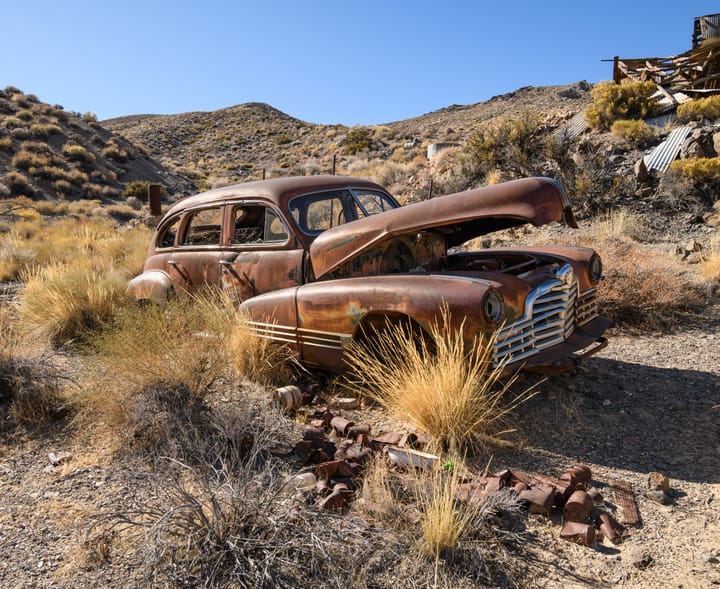Much about the history of Skidoo has already been written in various books and online, so I will only give a brief summary here:
The fifteen stamp mill was quickly built in 1908 by mine developer Bob Montgomery (of Bullfrog mining and Rhyolite fame) to develop the gold ores of the Skidoo mine just behind the mill. Ore was hauled directly from the mine to the mill via tunnels in the hillside. Mr. Montgomery had significant financial backing from Charles M. Schwab (a steel magnate). A townsite sprang up a little way to the east.



